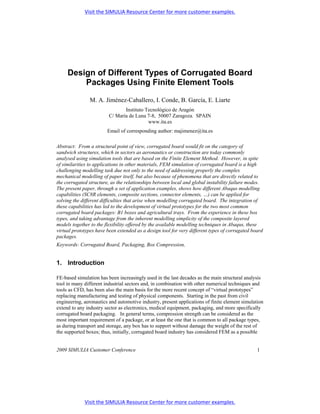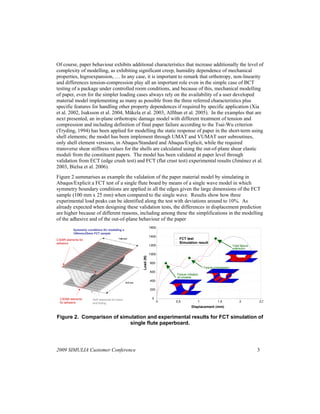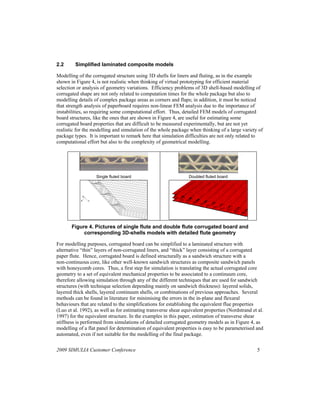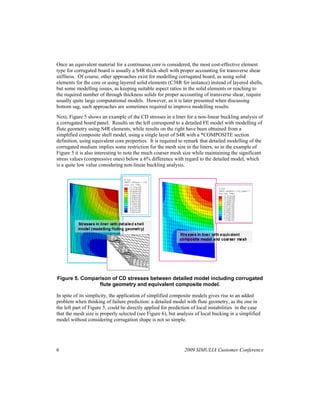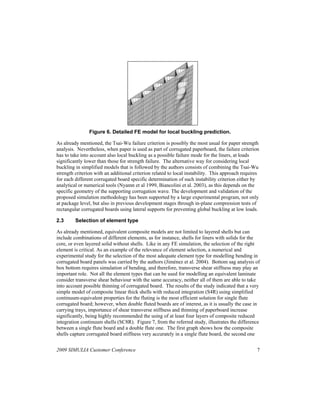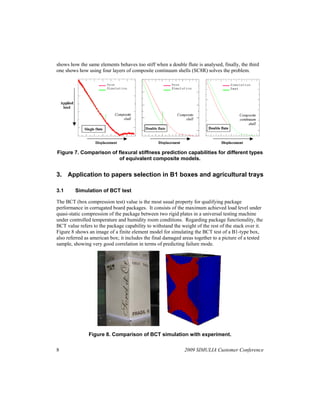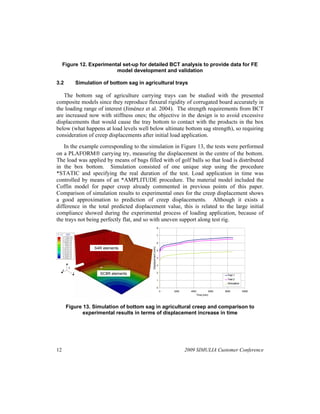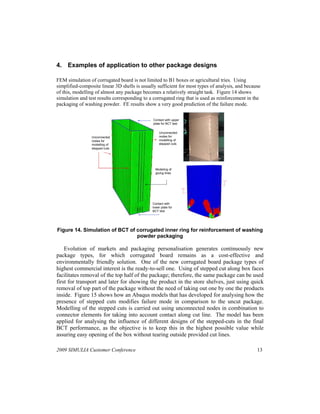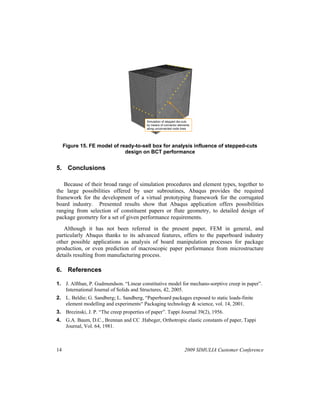This document discusses the challenges and methodologies related to the finite element simulation of corrugated board packages, highlighting its complexity due to the material properties of paper and the unique structural characteristics of corrugated design. It presents the application of ABAQUS software for creating virtual prototypes of common package types, specifically focusing on box compression strength and bottom sag analysis. Various modeling techniques and simulation strategies are explored to enhance accuracy and efficiency in predicting the mechanical behavior of corrugated board under different loading conditions.
